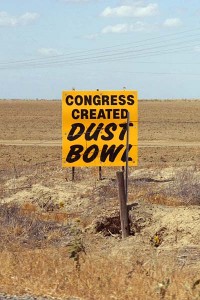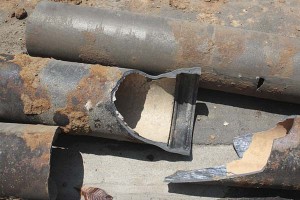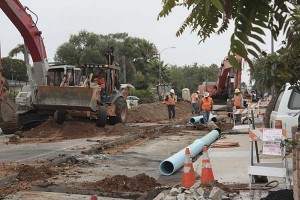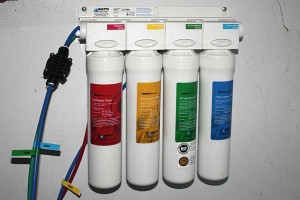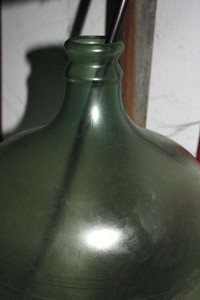It’s easy to obsess about something you don’t have enough of, and water in California is one of those things.
On my recent trip to Northern California it was hard not to notice the dozens of signs stuck along the side of the interstate like so many Fox News soundbites-on-a-stick. I can’t tell you all the details about our water-use wars, but it has something to do with ongoing drought, overpopulation and a mandate to return water to natural watercourses in attempt to keep some small fish from vanishing from the face of the earth forever. As cheap, plentiful water is shut off or diverted to the big cities with more political clout, it’s easy to see that some farmers aren’t happy.
Back home, we’ve been reminded that water doesn’t just magically fall from the sky in plentiful amounts. The cast-iron water lines that supply the neighborhood have been failing, and the old lines are being replaced with new, bright baby-blue water mains. All summer long the street out front has been a construction pit as they installed temporary supply lines, cut through pavement to remove the old problem pipe, installed the new lines and prepared to hook up the houses to the never-ending font of the life-giving fluid. They’ve said that the street will be a no-parking zone for the next six weeks. Feels like it’s been forever already.
Of course that water supply isn’t without limits. The city has been on a mandatory water-reduction program since June, and I was happy to see that city water use dropped 20% that month. But as the novelty of saving water wore off, July’s numbers fell to 12%.
I’ve been trying to do my part. Overall I feel pretty good about it, but I’ve found myself falling off the wagon a bit myself. My new offense is this little number, a reverse-osmosis purification system to improve the water quality I can offer a new little collection of carnivorous plants (more on that in a future post). A reality with almost all R/O systems is that producing one gallon of good water generates several gallons of waste. I knew that going into it, but the reality of it is pretty stunning.
But instead of following the installation instructions, which outline in detail how you send all the wastewater down the drain through the special pipe fittings the manufacturer thoughtfully supplies with the unit, I modified the installation to aim the waste stream into a water bottle. The rejected water ends up being a little saltier and grosser that what comes from the tap, but it’s still cleaner than the graywater we’re recycling from our showers and is perfectly good for watering the plants that aren’t among the chosen few.
Now that I’ve lived with this setup for a couple of weeks I’m finding that lugging around five gallon water bottles can be a bit of a chore. Maybe I’ll rig a way to divert the waste directly to the garden. But that’s a project that will have to wait. Fall planting season is coming up, as well as a pile of house projects. And then there’s that new collection of plants to play with…

